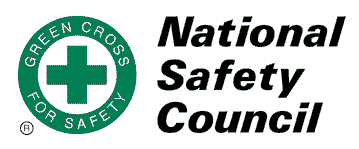Preliminary Estimates: Motor Vehicle Deaths Plateaued in 2017, But Still Up 6 Percent from 2015
 |
ITASCA, Ill., Feb. 15, 2018; Preliminary estimates from the National Safety Council indicate motor vehicle deaths dipped slightly – 1 percent – in 2017, claiming 40,100 lives versus the 2016 total of 40,327. The small decline is not necessarily an indication of progress as much as a leveling off of the steepest two-year increase in over 50 years. The 2017 assessment is 6 percent higher than the number of deaths in 2015. If the estimate holds, it will be the second consecutive year that motor vehicle deaths topped 40,000.
Approximately 4.57 million people were seriously injuredi in motor vehicle crashes in 2017, and costs to society totaled $413.8 billion. Both figures are about 1 percent lower than 2016 calculations.
"The price we are paying for mobility is 40,000 lives each year," said Deborah A.P. Hersman, president and CEO of the National Safety Council. "This is a stark reminder that our complacency is killing us. The only acceptable number is zero; we need to mobilize a full court press to improve roadway safety."
The National Safety Council has tracked fatality trends and issued estimates for nearly 100 years. All estimates are subject to slight increases and decreases as the data mature. NSC collects fatality data every month from all 50 states and the District of Columbia and uses data from the National Center for Health Statistics, so that deaths occurring within one year of the crash and on both public and private roadways – such as parking lots and driveways – are included in the estimates.
Factors impacting motor vehicle fatality trends include an improved economy, which has helped fuel a 1 percent increase in miles driven from 2016 to 2017.
To help ensure safer roads, NSC urges motorists to:
- Practice defensive driving. Buckle up, designate a sober driver or arrange alternative transportation, get plenty of sleep to avoid fatigue, and drive attentively, avoiding distractions. Visit nsc.org for defensive driving tips.
- Recognize the dangers of drugged driving, including impairment from prescription opioids. Visit StopEverydayKillers.org to understand the impact of the nation's opioid crisis.
- Stay engaged in teens' driving habits. Visit DriveitHOME.org for resources.
- Learn about your vehicle's safety systems and how to use them. Visit MyCarDoesWhat.org for information.
- Fix recalls immediately. Visit ChecktoProtect.org to ensure your vehicle does not have an open recall.
- Ask lawmakers and state leaders to protect travelers on state roadways. The NSC State of Safety report shows which states have the strongest and weakest traffic safety laws.
- Join the Road to Zero to understand how safety professionals are addressing motor vehicle fatalities. Visit nsc.org/roadtozero to get involved.
Supplemental estimate information can be found here.
About the National Safety Council
The National Safety Council is a nonprofit organization whose mission is to eliminate preventable deaths at work, in homes and communities, and on the road through leadership, research, education and advocacy. Founded in 1913 and chartered by Congress, NSC advances this mission by partnering with businesses, government agencies, elected officials and the public in areas where we can make the most impact.
i National Safety Council defines "serious injuries" as those requiring medical attention.
National Safety Council figures are not comparable to National Highway Traffic Safety Administration figures. NSC counts both traffic and nontraffic deaths that occur within a year of the accident, while NHTSA counts only traffic deaths that occur within 30 days.


